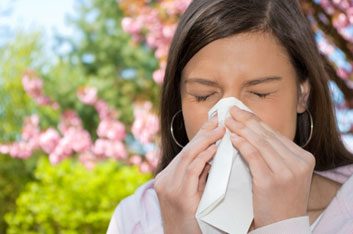
How can foods fight allergies?
When allergens-pollen, grasses, dust mites or molds-find their way into your nose, your body goes into attack mode if it’s hypersensitive, or allergic. Immune cells release histamines, the chemicals responsible for most of your allergy symptoms. These in turn kick-start inflammation that’s intended to keep the allergens from traveling into the body. The inflammation makes sinuses and nasal passages swell and eyes itch. Histamines also stimulate the nasal passages to release fluids, resulting in a runny nose and itchy throat, and cause sneezing, another attempt to send the allergens packing. Many of the foods that may help reduce allergies work by reducing inflammation or calming the immune system.
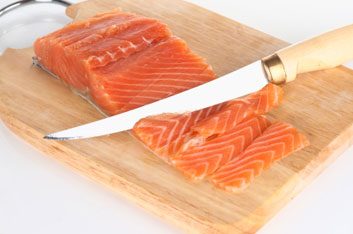
Salmon and other fatty fish
Fatty fish like salmon, sardines, and mackerel should be your first line of dietary defense against allergies. That’s because they contain generous amounts of omega-3 fatty acids, which help minimize inflammation, a direct cause of most allergy symptoms. Several studies suggest that kids who start eating fish early in life may even be less likely to have allergies later. Eating more fish helps balance out the ratio of omega-3s to omega-6s in the body, which seems to have several beneficial effects on the immune system that translate into fewer allergy symptoms.
One Australian study that analyzed nearly 500 eight-year-olds found that those who ate fish at least once a week were 80 percent less likely to have ryegrass pollen allergies, a common cause of hay fever, than those who rarely ate fish.
Aim for: One to two servings of fatty fish such as salmon, tuna, and mackerel per week. Look to fish-oil supplements if you want to get even more omega-3s.
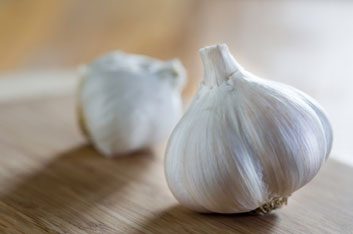
Garlic
What isn’t garlic good for? In the case of hay fever, the oh-so-smelly bulbs appear to work by supporting the immune system with their rich store of antioxidants. Researchers have identified a link between a higher intake of certain antioxidants and a lower incidence of hay fever.
Aim for: Use fresh garlic liberally as a seasoning. You can also cut a whole clove into several chunks and swallow them like pills for a daily dose. Your stomach acids will break them down and release antioxidants as the garlic travels through the colon.
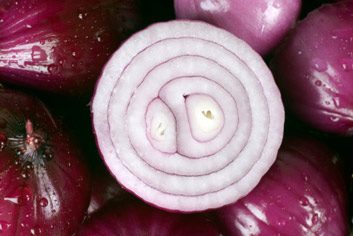
Onion
This humble bulb packs a hefty dose of quercetin, an antioxidant that can help reduce inflammation and may help prevent the release of histamine from immune cells called mast cells. Quercetin also helps improve the body’s absorption of vitamin C, another antioxidant with immunity-boosting powers. Quercetin may even work to stabilize cell membranes so they’re less reactive to allergens. Other good sources are apples with skin, berries, red grapes and black tea.
Aim for: Sprinkle raw onions on salads, stews, burritos, and other foods whenever you can.
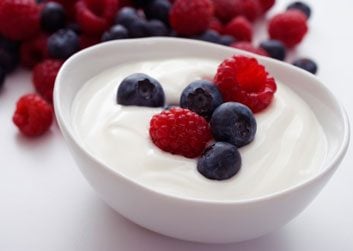
Yogurt with live cultures
The live beneficial bacteria found in yogurt and other fermented products like kefir help keep the flora and fauna in your gut-where many immune cells are located-healthy. These foods stimulate the body to produce certain white blood cells and antibodies as well as various growth factors that are important for keeping the body from overreacting to allergens.
An Italian study found that when volunteers who regularly had bouts of hay fever ate 2 cups (500 mL) of yogurt daily for four months, they had half the histamine levels in their blood and fewer hay fever symptoms than those who drank the same amount of skim milk daily.
Pregnant women take note: When moms-to-be eat foods that contain probiotics, such as yogurt, on a regular basis, their babies have a lower risk of developing allergies as they grow up.
Aim for: One or 2 cups (250 or 500 mL) of yogurt or other fermented milk products per day. Check the label for lactobacillus, bifidobacterium and Bacillus clausii, and other live cultures.
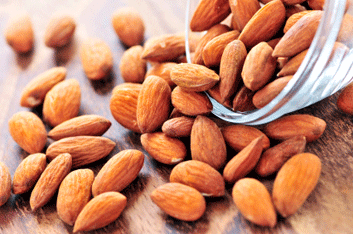
Almonds, wheat germ, leafy greens
In one German study of 1,700 adults with and without hay fever, those who ate foods rich in vitamin E (the equivalent of 10 to 13 mL per day) had a 30 percent lower incidence of hay fever than those who ate diets low in the vitamin.
Aim for: Lots of leafy greens, whole grains, nuts and avocados. Thirty grams (1 ounce) of almonds provides 7 milligrams of vitamin E. A one-cup (250-mL) serving of cooked spinach provides 2 mg and 2 tablespoons (25 mL) of wheat germ provides 2.5 mg.
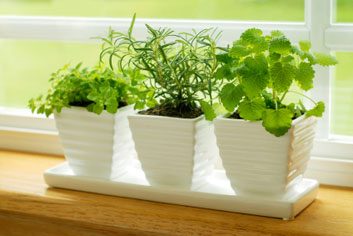
Oregano, lemon balm, rosemary and other herbs
All of these herbs, along with sage and marjoram, contain rosmarinic oil in their leaves. One Japanese study showed that this acid, an extract of the oil, has an anti-inflammatory effect that helps reduce the symptoms of seasonal allergies.
Aim for: Season your dishes liberally with fresh herbs to reap the most benefit. Make lemon balm tea, add chopped oregano and rosemary to pasta dishes, and use sage and marjoram on poultry and fish.
Related:
• 5 things you should know about allergies
• Allergies and your sex life
• Do I have a cold or an allergy?
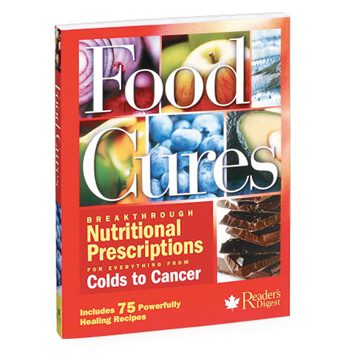
Find more Food Cures
Here is your definitive guide to help heal, ease, or prevent 57 ailments with common foods and nutritional supplements. Settle nausea with ginger. Give your memory a boost with oatmeal. Lower your blood pressure with bananas. You’ll find dozens of detailed food “prescriptions” to help treat everything from allergies to migraines to ulcers and more. Plus, you’ll be amazed at how many favourite foods are on the menu: beer, red wine, dark chocolate, shrimp, guacamole, peanut butter…That’s because healing yourself with food is not about eating less, it’s about eating more. And with 75 delectable recipes, eating for health has never been more delicious!
